Abaei Matsuri Festival
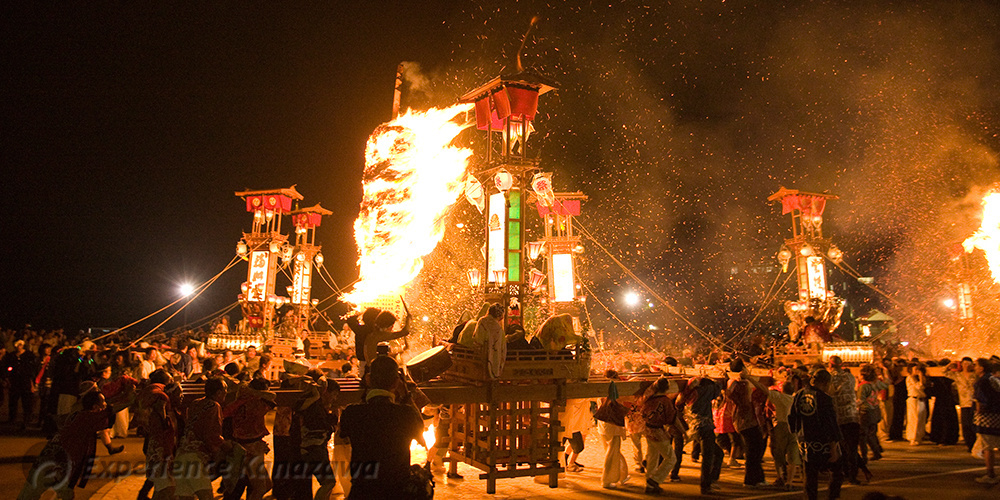
The festival of flame, delivered from a legend saying that a holy blue hornet saved the lives of many!
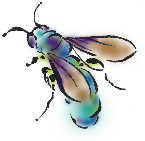
Coco SHIZUO, Artex Inc.; Updated June 1, 2018
Abaei Matsuri Festival

The festival of flame, delivered from a legend saying that a holy blue hornet saved the lives of many!

Coco SHIZUO, Artex Inc.; Updated June 1, 2018
Place: Ushitsu district, Noto-cho Town
Day-1: The first Friday of July (21:00 - 24:00 or later); Day-2: The first Saturday of July (21:00 - 24:00 or later)
How to get to Ushitsu District: Take the express bus "Kanazawa - Ushitsu/Mawaki Line," get off at "Notomachi Town Office"! Check the timetable!

The quiet fishing port turns into an aggressive showcase with flames!
Noto-cho Town is a town of 20,500 people, located on the eastern coast of the Noto Peninsula.
We left Kanazawa around 5 pm, arrived in Anamizu Town before 6:30, and stopped for dinner at a family restaurant. Although Noto-cho town is located next to Anamizu, we needed to drive another hour to reach Ushitsu district.
There was a huge parking lot set up by the ocean for the festival. We parked our car and went off to the Noto-cho town office! Before we arrived at the office, the fireworks started up at the wharf. Although I saw people enjoying the blasts behind fishing boats, I couldn't see any Kiriko lanterns at all. Where are they? For those who have not visited the district, such as myself, it would be difficult to navigate through the neighborhood right away. Well, we just need to follow the sounds of the taiko drums! I walked alongside the Kajikawa river. Ushitsu district is a small fisherman's village which has a population of fewer than two thousand. Although it's usually pretty quiet, it really turns into an aggressive showcase on these two days. There they are! The 7-meter-high Kiriko lanterns are standing in a line.
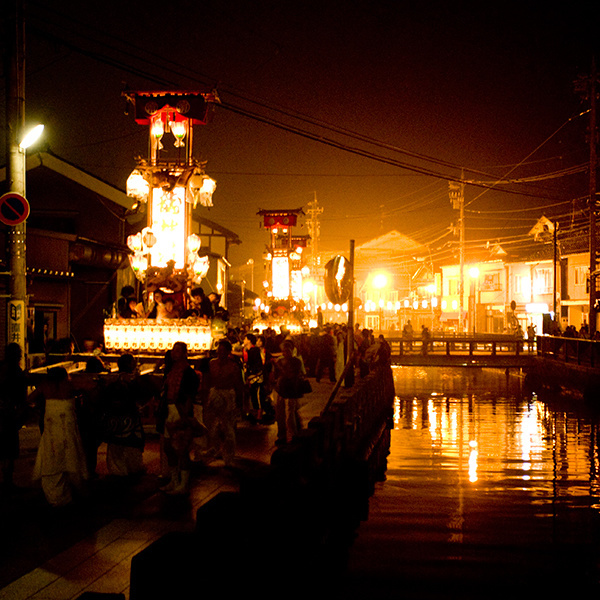
Needless to say, it's one of the famous festivals of the Noto Peninsula!
People who came from Ushitsu but now work in big cities often return home to join the festival every summer. I've heard stories about the festival saying that only women continued the festival during the war. They are proud of it! Needless to say, it's one of the famous festivals of the Noto Peninsula!
We could see little kids playing Japanese flutes and high school boys beating taiko drums on the lantern floats, while adults were chatting nearby. It was almost 9 pm. Soon, the floats started one by one. I'm not sure that I could see all of Kiriko on the first day of the festival, it's said that they have 40, making it the largest number in the peninsula.
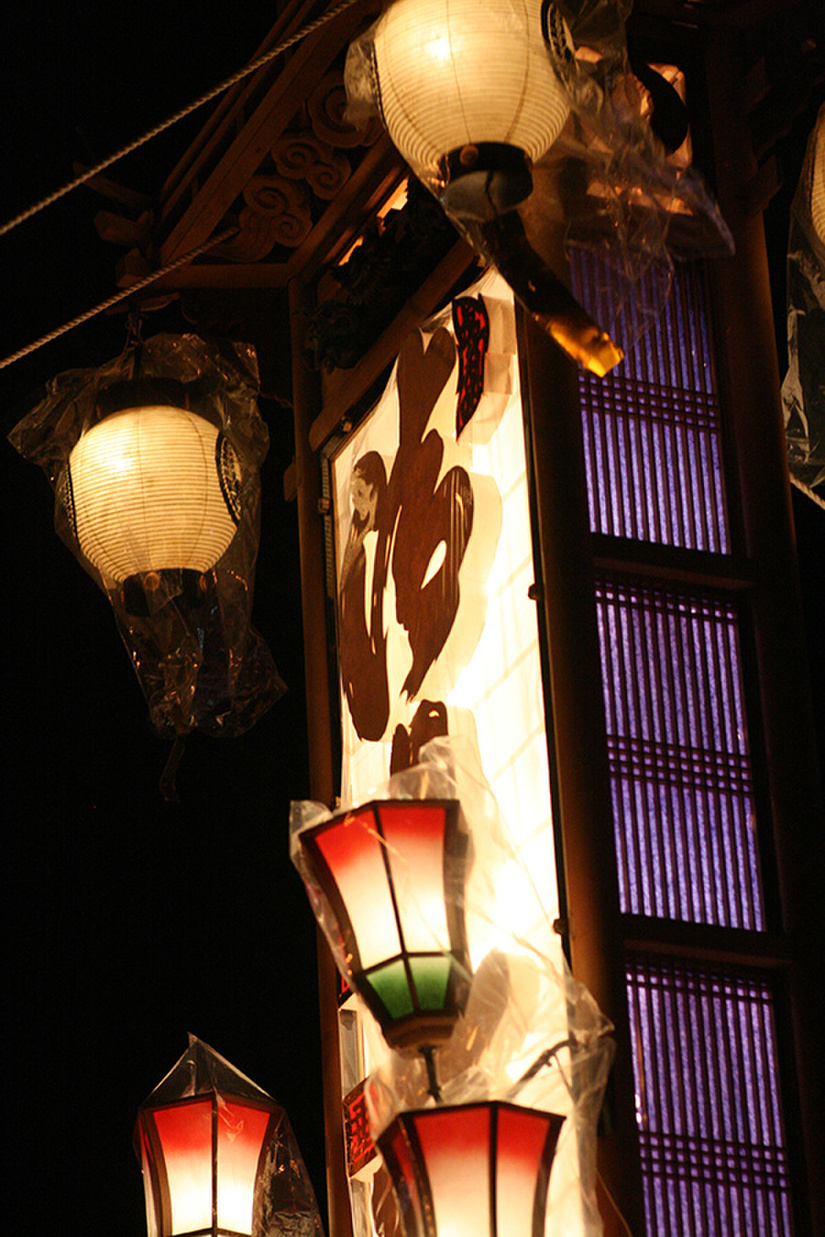
It's made of plain wood, having its embossed Chinese characters on the light. The Ushitsu people are serious about the cleanness of the unvarnished wood. Once it starts to turn dark, they renovate it immediately. Sometimes people come from other districts to get these used wood parts for their own Kiriko floats. Unfortunately, The wood of Ushitsu is well-known for its heaviness. It's said that it was quite hard for people in the other districts to drag it back home. The Kiriko floats in Ushitsu used to be taller, like the ones used for the Issaki Hoh-Toh Matsuri. However, they got smaller during the Taisho Era, due to expanding utility poles and electric wires.

Let's get into a spark of fire and get smeared with the holy ash!
As I followed the parade heading to the open space just in front of the town office, I could see huge torches covered in flames. Then, I bumped into one of my friends who worked in Kanazawa as an ALT (Assistant Language Teacher). He was visiting his friends for the festival, and was telling me about how you really can't see anything like this in the States.
It became crowded, and a police officer warned people not to get too close. Local people, dragging their Kiriko lanterns, entered the open space and showed off their performance while onlookers marveled. The lantern floats were rapidly moving around the torch. There were even many little kids on the floats, never showing a sign of fear! Oh yes, the children of brave fishermen indeed! The sparks of fire came to us and turned into ash on our faces and clothes.
This is only just the first day! On the second day, two portable shrines show up and people throw them into the Kajikawa River under a torch. Sounds crazy, right? Do you know what Abarei Matsuri literally means? It's actually a violent festival!
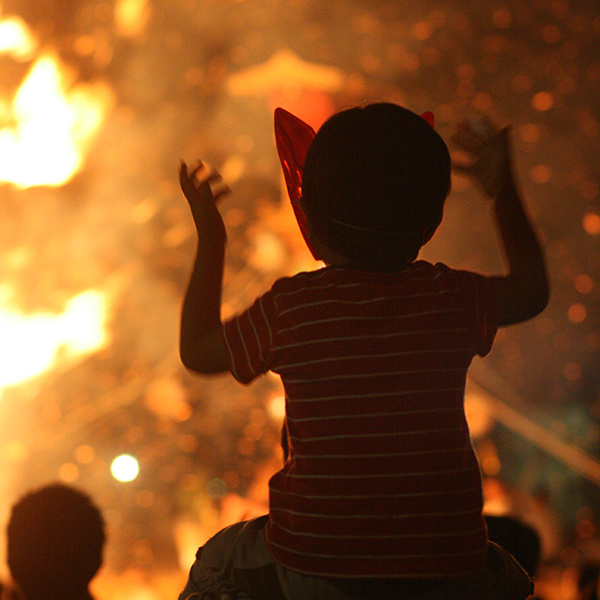
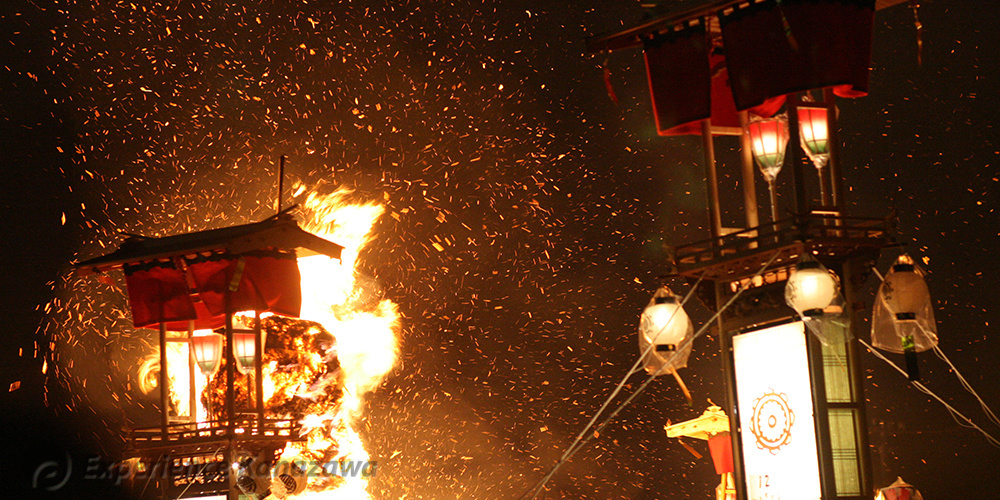
Kanazawa Area
Kenrokuenn Garden
Following Matsuo Bashô’s steps in Ishikawa - 1/6 [Introduction]
Following Matsuo Bashô’s steps in Ishikawa - 2/6 [Kanazawa]
Noto Area
Mitsukejima Island
Kaga Area
Following Matsuo Bashô’s steps in Ishikawa - 3/6 [Komatsu City]
Following Matsuo Bashô’s steps in Ishikawa - 4/6 [Natadera Temple]
Following Matsuo Bashô’s steps in Ishikawa - 5/6 [Yamanaka Onsen Town]
Following Matsuo Bashô’s steps in Ishikawa - 6/6 [Daishoji District]
Rosanjin in Yamashiro Onsen Town
Stroll Kanazawa in Rental Kimono - 1/2 [Kimono Rental]
Stroll Kanazawa in Rental Kimono - 2/2 [Kimono Stroll]
January
Enyukai: Geisha Party
February
Setsubun-Sai Festival
AUGUST
Issaki Hoh-Toh Matsuri
November
Enyukai: Geisha Party
